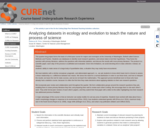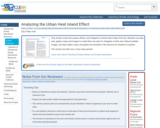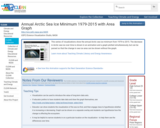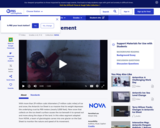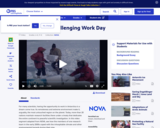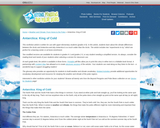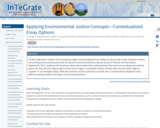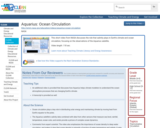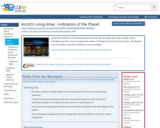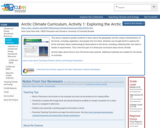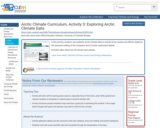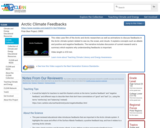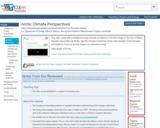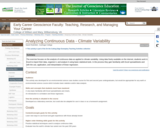
The activity is divided into seven parts, as follows:
Part A: students access an online data set of historic global temperature anomalies and use the webpage to answer questions about the source and presentation of the data.
Part B: students copy the data into an Excel spreadsheet and organize it so that it is easy for them to use and for others to follow.
Part C: students graph their data, explore the use of trend lines, and use a linear regression line to predict future temperatures.
Part D: students access an online data set of historic temperature anomalies within their latitude zone, analyze this data, and compare their results to those from Part C.
Part E: students access an online data set of historic temperatures for their state, analyze this data, and compare their results to those from Parts C and D.
Part F: students choose two original questions related to climate variability and use these or other data sets to address their questions.
Part G: students evaluate the statistical significance of their linear regression lines and interpret their results in the context of climate variability
(Note: this resource was added to OER Commons as part of a batch upload of over 2,200 records. If you notice an issue with the quality of the metadata, please let us know by using the 'report' button and we will flag it for consideration.)
- Subject:
- Applied Science
- Biology
- Environmental Science
- Life Science
- Material Type:
- Activity/Lab
- Provider:
- Science Education Resource Center (SERC) at Carleton College
- Provider Set:
- Teach the Earth
- Author:
- Sarah Rubinfeld
- Date Added:
- 09/11/2020
